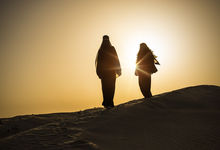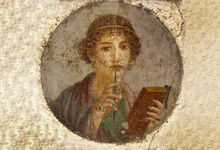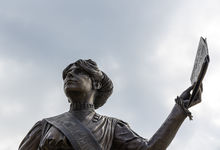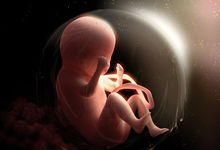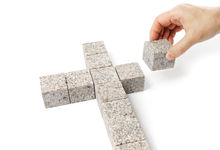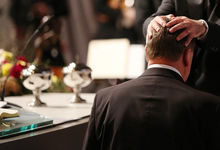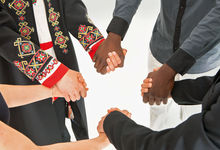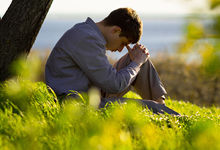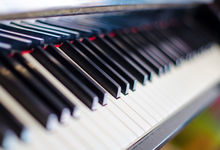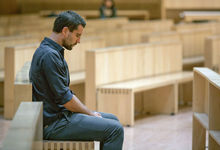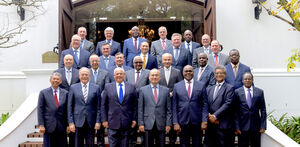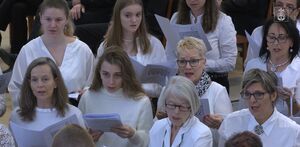Same nature, same value, same mission
The New Apostolic Church professes equality and equal rights for both women and men. This is one of the conclusions that derives from its most recent doctrinal paper, which includes an appeal for both men and women to accept responsibility in the state, the church, and in society together.
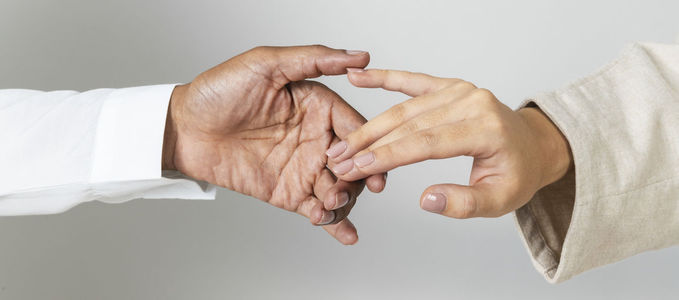
As we read in section 3.3.2 of the Catechism, the core statement of the paper is actually nothing new: “Man and women are both created in the image of God.” For this reason they are of the same nature and have the same mission to perform. These few sentences from the Catechism serve as the basis of a 15-page treatise that expands upon them under the title “Man and woman in the image of God”.
The paper was up for debate at the meeting of the District Apostles in November 2020 and was sent out to all Apostles as a circular letter in December 2020. The text has now been published in the Special Edition 2/2021 of the Divine Service Guide for ministers. The member magazine community and the German-language Church magazine will likewise feature this publication in the second half of the year.
Two questions to ask in two different accounts
The starting point are the two accounts of the creation. Two accounts? Yes indeed: there are actually two different accounts of the creation in Genesis 1–3, one of them a more abstract narrative in which God works through His word, and the other a depiction that features active protagonists, in which God goes to work in person.
In both accounts of the creation, the present doctrinal paper pursues two central questions: what does this narrative imply about the relationship between human beings and the creation? And what does the biblical evidence have to say about the relationship between the sexes?
One answer for both woman and man
The result: both narratives attest to the special role of human beings in the creation. This is clear in the first account because God expressly creates human beings in His own image. In the second, the human breath of life comes directly from the breath of God. And in both accounts, man is assigned the task to shape and have dominion over the earthly creation.
The equality of man and woman is also attested here: in the first account, God not only creates human beings “in His own image”, but expressly creates them as “male and female”. The second account requires a closer look beneath the surface: the fact that this first human being—who is as yet sexually undifferentiated—is called “Adam” is a reference to the earth (adamah), from which his being is formed. And the fact that man’s missing counterpart is made from his rib does not imply dependency, but rather sameness.
A return to the will of God
The treatise emphasises that the creative actions of God can by no means justify any sort of hierarchisation of men and women. Quite the contrary: “Any subordination of the woman to the man must be described as contrary to the will of God and the creation: it is not part of the good creation of God.”
It is only after the fall into sin that there is any mention of the man ruling over the woman. Since then, the fact that both man and woman are created in the image of God has come to very different forms of expression in biblical prehistory and in world history. It will only be possible to experience the perfect manifestation of their likeness to God in the new creation.
The creation mandate and love for one’s neighbour
Until then, the mandate to shape and protect the creation and earthly life applies equally to both sexes. The doctrinal paper goes on to explain that this already begins in matrimony and family life. However, this also implies “that both man and woman accept total responsibility” in the state, the church, and in society as a whole. “Refusal to perceive, deal with, or participate in social reality contradicts the commandment to love one’s neighbour, as well as the mandate given to all human beings in the creation.”
The official summary of this doctrinal paper can be found on the Church’s official home page at nak.org. A series of articles on nac.today will focus on the role of women in history and society over the coming weeks.
Photo: rawpixel.com / Jira
Article info
Author:
Date:
Keywords:
Andreas Rother
04.03.2021
Bible,
Doctrinal statements,
Doctrinal instruction



